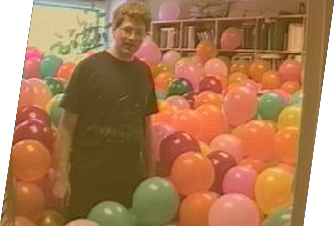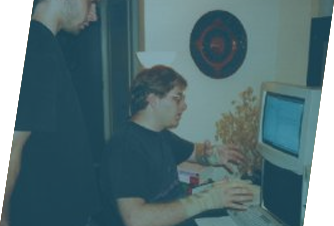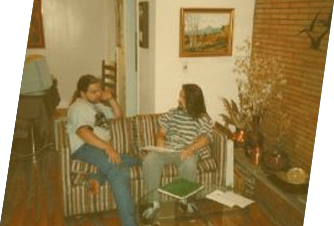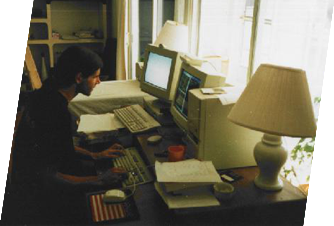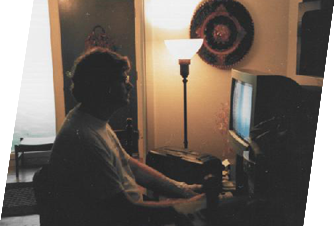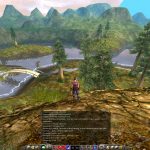Demos, Demos, and More Demos
At last we built enough of a product to be able to give real demos. And our business plan and business savvy kept improving.
By this time we had the game roughly planned out. We had hired a game designer, Toby Ragaini, who built the backstory for the game. I had architected, at the highest level, the modules for the large software engine that supports the game. Plus several of the modules had been mapped out in detail. My own projects were designing and writing a graphics engine, a toolkit for our artists to use the system, and the “physics system” that allowed objects to collide with one another and interact in our 3D virtual world. Ironically, although I’d left academia, doing this design took quite a bit of academic research. I loved it. The team spent hours and hours in design meetings and poring over research papers. But I became too busy for programming, instead focusing entirely on business. Other programmers took my modules and they went through many improvements and revisions before our first game shipped.
Getting any product mass produced, advertised, and distributed around the country was too expensive for any new startup. Large companies, the publishers, specialized in finding talent and bringing that talent to the world. We needed a business to get our product to market. We were the developers hoping to get spotted by talent scouts at publishing companies. The entire summer’s work went towards this goal.







